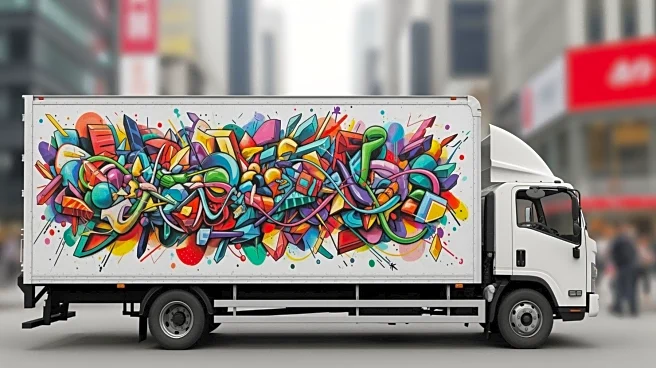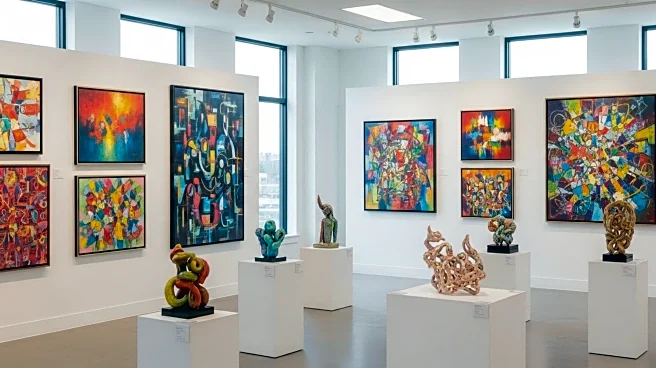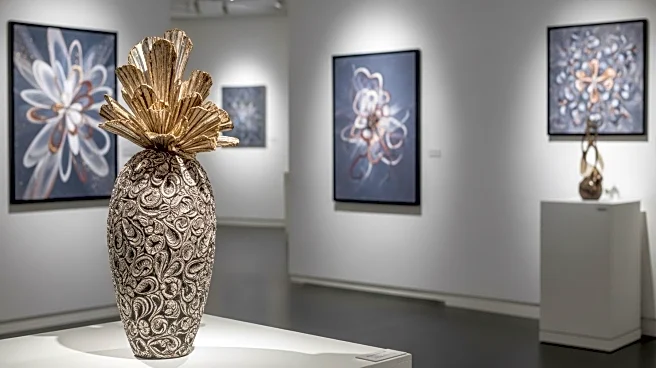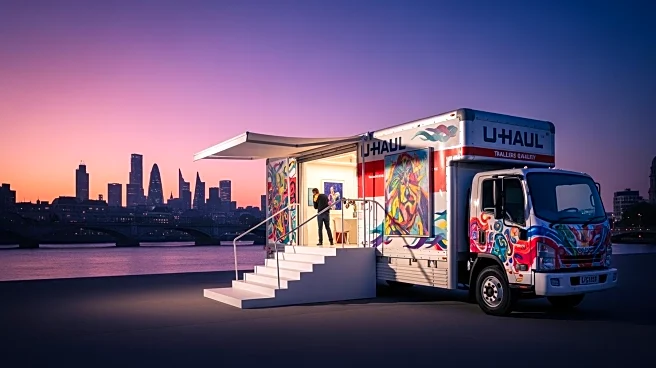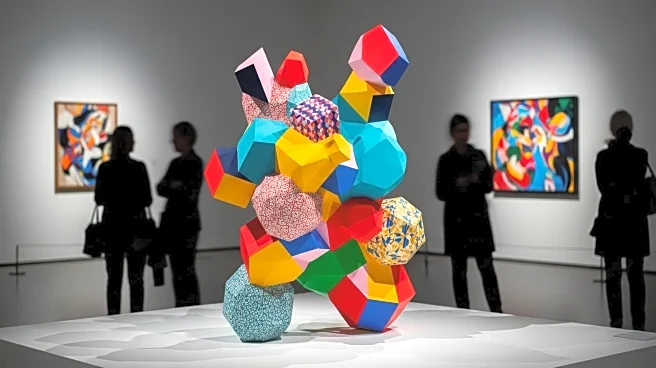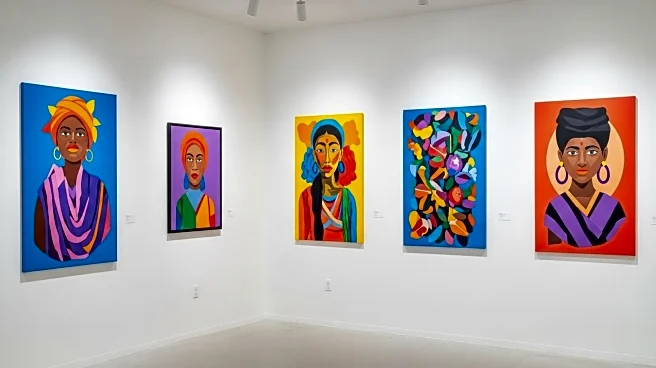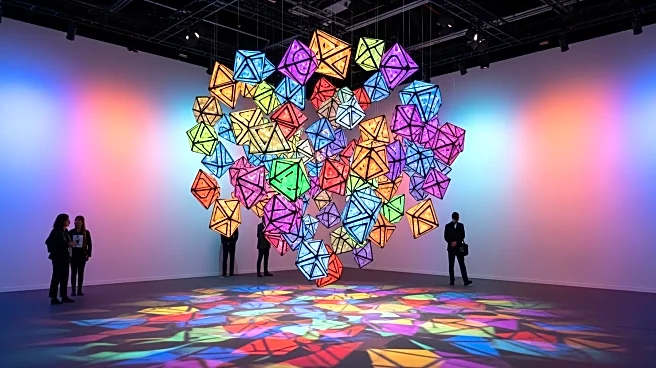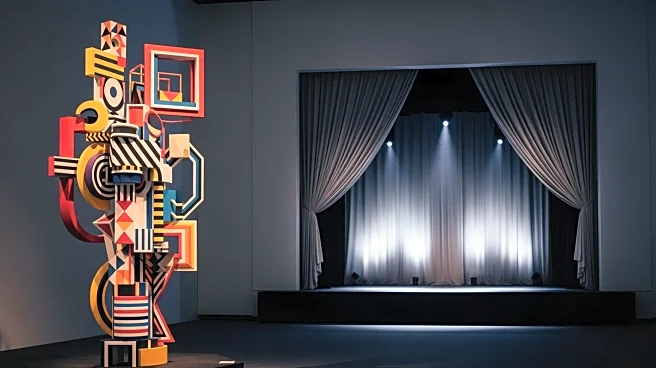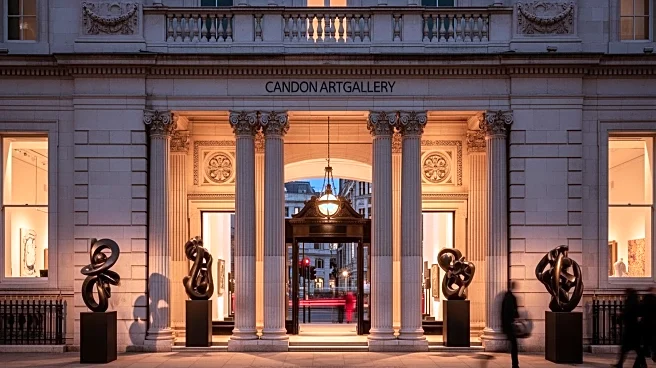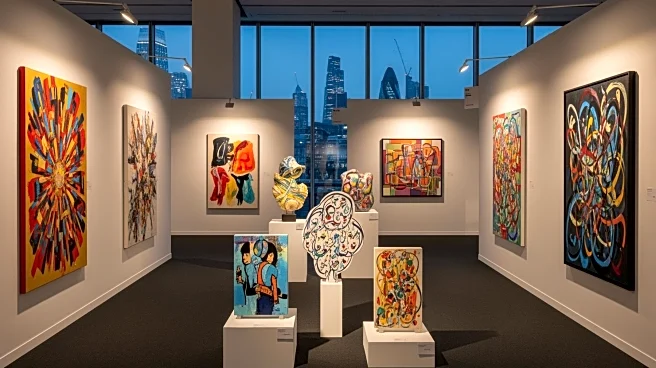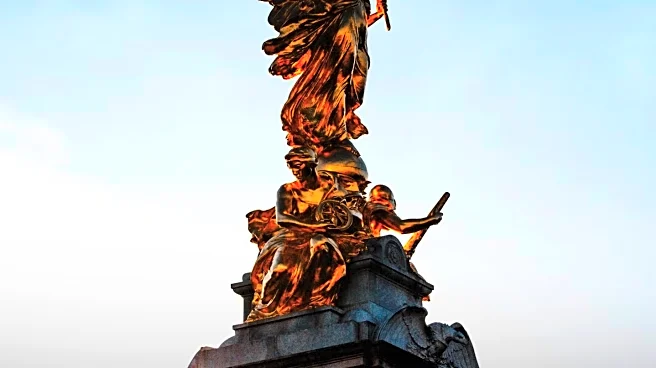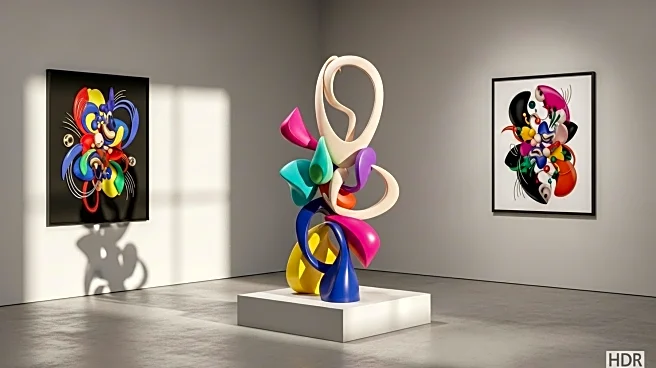What's Happening?
U-Haul Gallery, a nomadic art exhibition initiative, made its debut in London during the Frieze London event. Founded by James Sundquist and Jack Chase, the gallery operates out of rented U-Haul trucks, showcasing art in unconventional spaces. The gallery parked
near Regent’s Park, displaying works by artist Vladimir Umanetz, including a portrait of Tina Turner and a mixed-media collaboration with Hikari Hamada. The initiative aims to empower artists by utilizing affordable and mobile exhibition spaces, with the truck rental costing £750. Despite the innovative approach, the gallery's presence was short-lived due to park regulations.
Why It's Important?
The U-Haul Gallery represents a shift in how art can be presented and accessed, challenging traditional gallery spaces and offering artists a more flexible and cost-effective platform. This approach democratizes art exhibitions, making them accessible to a broader audience by bringing art directly to public spaces. It highlights the growing trend of utilizing unconventional venues to reach new audiences and reduce overhead costs, potentially influencing how art is marketed and consumed in the future.
What's Next?
The U-Haul Gallery's brief stint in London suggests potential for similar pop-up exhibitions in other cities, offering artists new opportunities to showcase their work. As the concept gains traction, it may inspire other artists and curators to explore mobile galleries, potentially leading to collaborations with local authorities to accommodate such initiatives. The gallery's success could prompt discussions on how public spaces can be used for cultural events, balancing accessibility with regulatory compliance.
Beyond the Headlines
The U-Haul Gallery's approach raises questions about the commercialization of art and the role of traditional galleries. By circumventing conventional spaces, it challenges the status quo, potentially leading to a reevaluation of how art is valued and sold. This model could influence the art market, encouraging more artists to seek alternative methods of exhibition and sales, impacting the dynamics between artists, galleries, and collectors.
